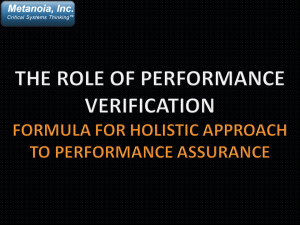Having looked at the operator needs driving the renewed interest in performance management, a core component of which is measurement, a natural question now is what are the new requirements for measurement in networks today?
When one examines the nature of networks and network traffic, the following characteristics emerge:
- The nature of network traffic (in particular Ethernet traffic) is very asymmetrical. Increasingly, content in the core is sent towards the edge. This is true in private cloud, CDN, and regular networks. Video (live streaming or over-the-top content) also flows from core to edge. Almost 80% of the traffic today comes from the core.
- Applications, however, were designed assuming symmetric networks.
- One-way measurements (and not two-way measurements divided by 2) are important, as symmetry assumptions no longer work.
- When measuring one-way metrics, alignment or synchronization between the end-points is essential, thus synchronization accuracy is a fundamental requirement.
Therefore, performance visualization (end-to-end visibility – including verification of circuit turn-up, validation of SLAs, and visualization of performance) is needed both for the end-customer (enterprise) in a business context (so they learn how their service is doing and if their applications are performing optimally), and for the operator in a technical context (so they learn how their network is doing, where the bottlenecks (if any are), and how to identify and correct them).
Without reliable, scalable, deterministic performance, the performance drops as service density increases. Furthermore, absolute QoS and not relative QoS is needed.
These imply that performance verification reporting is important, which involves rolling up measurements, correlating them with services and customers, and reporting them in a timely manner, in a format that allows the operator (or their customer) to take proper action.
Performance verification delivered in this way is valuable for an operator because it:
- Provides a way to upsell services
- Enables the operator to justify premium prices for better performance and performance visibility
- Facilitates better business decisions, due to better intelligence
- Allows superior (pro-active) customer care – imagine a case where the operator proactively calls the customer about a service outage, and let’s the customer know what to expect, and approximate time frames
Formula for a Holistic Approach to Performance Assurance
Thus, a holistic approach towards performance assurance evolution is to:
- Start with accurate & integrated instrumentation in the network elements and at appropriate network points to measure performance – e.g. microsecond measurement accuracy, and per-second sampling granularity. This also helps to meet the OAM capability gap that exists in networks today.
- Next focus on service creation/aggregation and verification on top of that – including EVC add/drop capability, and protected service assured rings.
- Finally, bring this all together with performance management and visualization tools – for data collection, formatting, processing, and analytical reporting to turn raw data into actionable intelligence.
In a recent poll on a Lightreading webinar on this subject that I attended, a full 72% of the respondents were not offering SLAs with real-time performance reporting.
The three most common reasons given for this were: the absence of software tools for real-time reporting, the inability of network equipment to support deterministic performance, and the lack of a performance measurement capability in network equipment! A full 1/3rd of the respondents mentioned all three of the above as causes holding them back from providing real-time reporting to customers.
What does this tell us? That vendors need to listen more carefully to operator needs J. With the data explosion currently underway (boy, that’s an understatement!), it is clear that a big dent in service provider costs (opex and capex) can be made by having equipment that supports strong performance measurement capabilities and deterministic performance guarantees. This typically requires line-rate data paths, coupled with flexible counters and processing to compress and interpret the data at the higher layers to extract meaningful metrics for the operator. So, I’m wondering why this has not happened?
In any case, do you think the 3 step approach for performance assurance a good approach to move towards real-time performance assurance?
Are you a vendor providing such solutions? Then share with us your experience with service provider adoption! If you are an operator looking for such capabilities and coming up short, please tell us what you think can be done to service your needs? What, in your view, are the top 3 things vendors should focus on to give you this capability?
As Frasier would say “I’m listening!” … 🙂

